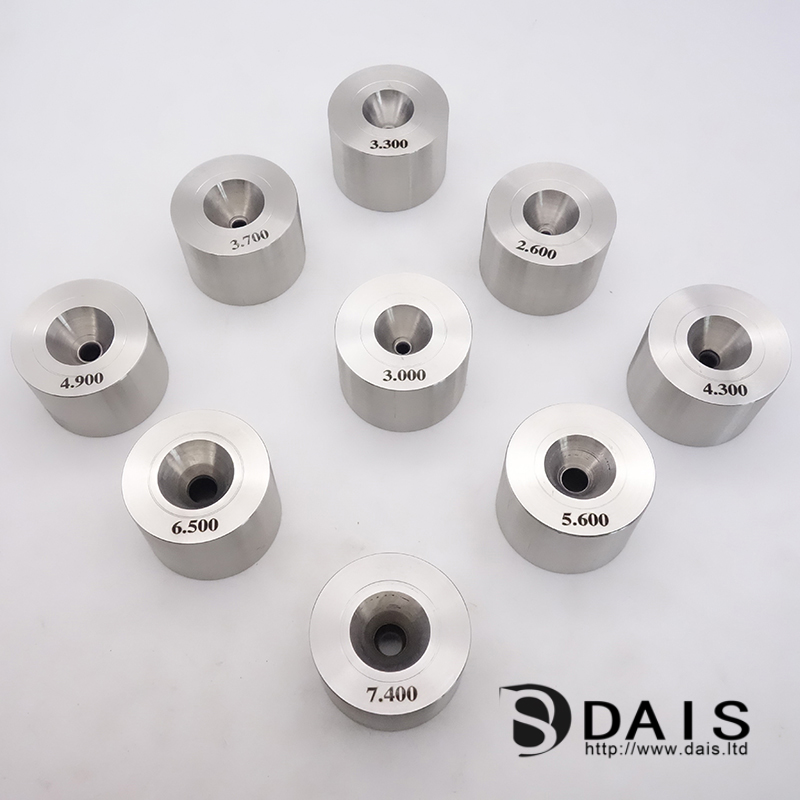Search

ADD:Building 123, Phase 3, Enterprise Base, No. 1 Lianhua Street, High-tech Industrial Development Zone, Zhengzhou, Henan, China
MOB.: +86-15517518512
MOB.: +86-15515520695
E-MAIL: admin@dais.ltd

Use of drawing die
In order to ensure high-quality wire and effectively control the cost of mold use, attention should be paid to the following points when using the wire drawing mold
1. Ensure the smooth operation of the wire drawing equipment: the wire drawing drums and wire guide wheels should be smooth and flexible, and their runout tolerances should be strictly controlled.
If the drum is found, the guide wheel has worn grooves and should be repaired in time.
2. Good lubricating conditions are important conditions to ensure the surface quality of the wire and extend the life of the mold. The lubricating indicators should be checked frequently to remove the copper powder and impurities in the lubricating oil so as not to pollute the equipment and die holes. If the lubrication fails, it must be timely Replace and clean the lubrication system.
3. Reasonable mold matching to ensure the surface quality of the wire, the control size is accurate and consistent, reduce the wear of the drawing drum and the key factor to reduce the operating load of the equipment. For the sliding wire drawing machine, it is necessary to be familiar with the mechanical elongation of the equipment, and choose the sliding coefficient reasonably, which is the first step of mold matching.
4. According to the material of the wire to be drawn and the area reduction rate of each wire drawing, select the mold hole type. Generally speaking, the harder the wire is drawn, the smaller the compression angle of the mold and the longer the sizing area; and vice versa. The area reduction rate of each wire drawing is also closely related to the compression angle of the corresponding mold, and the compression angle should be appropriately adjusted according to the size reduction rate.
Maintenance of drawing die:
The effective maintenance and repair of wire drawing dies is essential to reduce costs.
Due to the vibration of the wire, the area that first contacts the wire in the compression zone of the drawing die first produces some slight annular wear, and then continuously expands to the sizing area, resulting in a serious decline in the surface quality of the wire and the enlargement of the wire size. Not only that, severe wear and tear will cause lateral cracks (mainly in the drawing process of soft filaments) or longitudinal cracks (mainly in the drawing of hard filaments), resulting in premature scrapping of the mold.